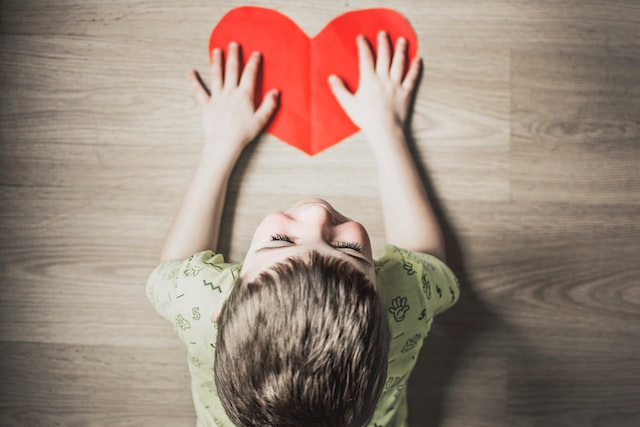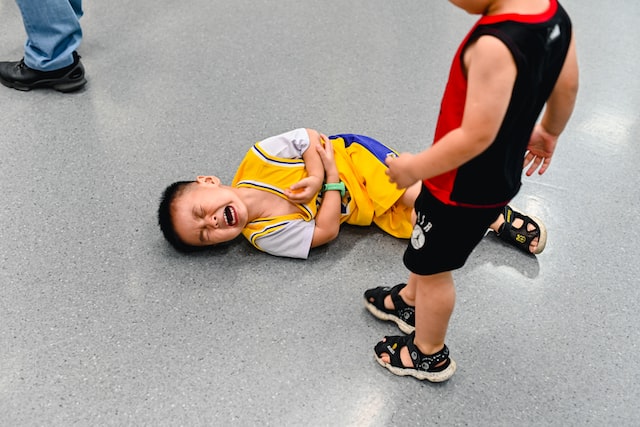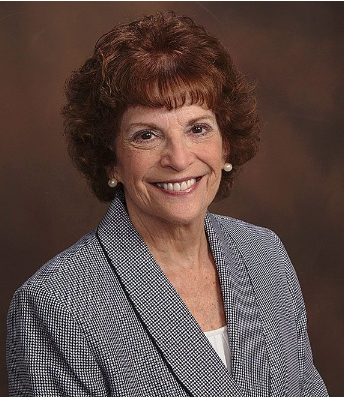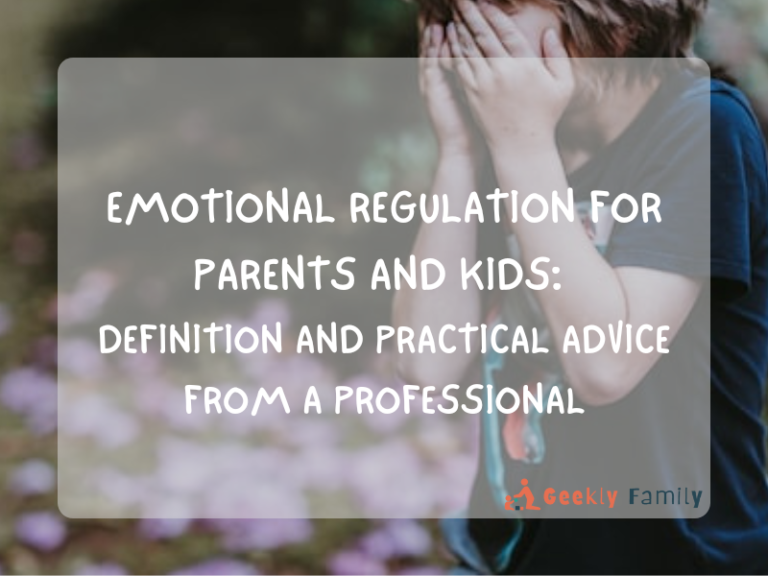Learning Emotional Intelligence: A Discussion With Karen E. Stone, a Certified EQ Practitioner
Learning emotional intelligence starts in early childhood, and most of the time it is learnt indirectly by copying the emotional behaviors of grownups. However, more and more parents have started seeing the significance of “teaching” emotional intelligence to their kids.
That is why, I discussed the whys and hows with Karen Stone, who has a 45-year experience in education and preschool-college.
Table of Contents
1. “Learning who we are emotionally” What does it mean? Why do we behave the way we do?
Who we are emotionally drives all our actions. Becoming aware of all the feelings we have is critical to exploring who we are emotionally and the actions connected to them. Children begin to model adults, siblings and peers almost from the time they arrive. So, who we are emotionally is determined by what was modeled for us.
In addition, we also can not neglect DNA. Our nervous systems may be different due to our DNA make-up. So, learning who we are emotionally is driven by all these factors.
However, our bodies are the same, for the most part, physically. The emotional brain and its development between the ages of birth to six is key to our reactions and behaviors in our environments. Social emotional intelligence is not innate and must be taught as well.
We have a short window of time to get the best results during those critical years. Children with disabilities have challenges in the social and emotional intelligence area. Though techniques may vary, they also require skill development for their emotional brains.

2. Does who we are emotionally change with age? Can a child at 3 be a different type at age 6?
Who we are emotionally changes daily. With every interaction in our environment, there is the opportunity for emotional input that will change our perspective on who we are. For instance, bullying, just one negative statement, may change a child or adult’s feelings about themselves.
Traumatic events wreak havoc with our emotional well-being. There are many influences on our emotional status. The most powerful ability to ride with changes is the ability to manage one’s own emotional well-being. Teaching these skills from a young age definitely changes how life will affect us in all circumstances.
Because I was bullied as a child both at home and at school, I suffered emotionally for many years. Finally at the age of 65, I was able to manage chaos and remain stable. The voices we hear day in and day out create our internal emotional language. This is why I created my early childhood program called, “The Voices of CJ,” in order to teach children about Daniel Goleman’s seven attributes of emotional intelligence and to develop those emotional brains at the most critical time.
In addition, my emotional suffering wouldn’t have occurred had I learned these skills at an early age.
The 7 attributes of emotional intelligence are:
- empathy/kindness
- self-confidence/positive thinking
- delay of gratification/ putting someone’s needs before your own
- managing one’s own emotional well-being/mindfulness
- accountability/saying I’m sorry
- sustaining hope/support through relationships and persisting in the face of frustration/ gratefulness.
3. Can we influence our children’s emotional types?
Yes, we can influence our children’s emotions. However, we are each human beings with different backgrounds and ways of approaching life. The Meyer-Briggs Type Indicator identifies sixteen personality types. Do these affect us emotionally? They certainly affect how we take in what happens to us emotionally.
An introvert will process and internalize and often hurt themselves. An extrovert may shout and scream and blame others. The sixteen types are affected by environment, parenting, school environment, etc. But in all types and scenarios, the skills they learn in order to manage their own emotional well-being will be similar. They are more affected by their learning styles regardless of whether they are visual, auditory, kinesthetic or tactile.
As a result, I ask teachers to be sure to know their children’s learning styles for the skill is the same but the approach may be different.

4. How should parents handle situations like tantrums with different emotional types of kids?
Children having tantrums are experiencing energies of anxiety, frustration and anger. They often pick up this anxiety from the adults and environments in which they live and play.
Children also choose tantrums to get attention or to show their frustration and disappointments at not receiving what they wanted. Children also model the tantrums that adults throw when they are not receiving what they wanted. They just have a smaller repertoire of behaviors.
I have found that the personality type of a child doesn’t require a specific action by their caretakers. Practicing the ability to manage one’s emotions is being in a state of mindfulness. Research has taught us that the emotional brain can shift energy within 6 seconds. Thus, once you become fully present with your feelings, a structured response with breathing and positive affirmation will allow the emotional brain to settle.
It is best if the adult and child do this together especially when the language of positive thinking and speaking has not yet been developed. With very young children, holding them and breathing with them creates a safe environment to determine their needs.
Once the child has calmed and you are able to communicate, create a choice of action. This gives them the feeling of independence and builds self-confidence. For example, would you like to have Cheerios or Corn Flakes this morning? Pick two of their favorites. This can be done with toys, clothes, etc.
If the tantrum begins again, start the breathing exercise. The breath is a powerful tool in managing our feelings and emotions. Using it in a structured response will become second nature. This is truly a blessing where children have been born with generational anxiety. I have this and learning this has been a Godsend. I use it in all stressful situations. So will you and your children.

5. Any action tips and examples you can share would be helpful.
Here are a few:
– Examine your own social and emotional well-being.
Learn what social emotional intelligence is and begin practicing it. Seek help if you are stumbling. I did! Meet with other like- minded mothers. Be sure your partner supports your seeking help and include your partner in all you are learning. Parenting is done as a team and the team must be on the same page. If you are a single parent, find a buddy who will support your wanting to evolve.
Story: Being a mother did not come easy to me. I was not socially or emotionally equipped to handle this huge responsibility. My first born, Darren, came into this world with a traumatic brain injury due to mal-practice. Even though I trained in special education, parenting is a whole different scenario. I was a mess. He looked normal but I knew instinctively that my life was now extremely complicated. I had no support from my husband who was even less socially and emotionally equipped.
I began therapy within a year. It helped but it was not enough to keep me emotionally supported. I was not able to seek family guidance. I was swimming in a sea of emotional barrenness. I did my best but the challenges kept coming and I held on with every fiber of my being. Thank goodness for my aunt and uncle who provided some support and love. How can you mother a normal child let alone one with traumatic brain injury when you were never mothered yourself.
– Children need positive responses to their challenges.
Mistakes are the only way we learn. Treat each mistake as an opportunity to teach a new behavior. Be sure you provide a safe emotional environment for the child to make mistakes. Once the mistake is made, support with caring and understanding.
If time out is needed for both of you, take it with breathing and affirmations. Then show the child how to do it differently and offer opportunities for practice.
Story: Mistakes were for most part of my childhood. I heard negative voices that affected my sense of self-worth. The shame that followed me into adulthood prohibited me from becoming an emotionally evolved adult until I learned and practiced my own EQ program.
– Children need to feel a sense of belonging as we all do even as we enter adulthood and beyond.
This is part of our DNA make-up. Their first communities are home and school. As early as possible, give your child a role to play. They are helpers, they are caretakers, they are comforters and providers of joy. Give them every opportunity to feel safe and secure when performing these roles.
As early as possible, give them jobs. Jobs with their things, taking care of pets, comforting you when you are sad and entertaining you with their antics. As they perform these “jobs” please reinforce with positive statements that include feelings. Also, ask them how they feel when they do these actions. This creates a sense of belonging, security and a strong sense of self.
Story: I was a single mom for quite a few years while my children were growing up. I learned the importance of my children helping as I raised my son with disabilities, Darren, to become socially and emotionally appropriate or intelligent. He was my sidekick. We moved 23 times and he was a champ at schlepping. He was strong and a gentle giant. He never said “no” to me because as he was helping, I was reinforcing his self-worth with positive affirmations as we worked.
He could not verbalize these feelings well but his smile and joyfulness when helping said it all. He also learned delay of gratification from this for there were times when he would rather have been riding his bike or listening to music. Those times are some of my greatest memories. I lost Darren to Melanoma 9 years ago but I know he is still there helping me.
– Stop whatever you are doing and read to your children.
That time is so valuable in so many ways. They hear your voice, they feel your presence, they may snuggle, they experience oneness with you.
And here is the most important piece of all: make it an interactive experience! Ask them questions about the characters, the location of the story, what they think is going to happen next. This builds connection and also builds a very important EQ skill, critical thinking.
Problem solving is part of becoming an individual self. Storybooks provide a wide range of scenarios to develop this important skill. Children then translate the lesson into their own lives and lessons.
Story: As a child, I was not read to. I also heard many negative voices. As a result, I shut down my auditory processing and had a very difficult time in school. I became a strong visual learner. However, this has had many ramifications in my life. So much of our lives are verbally communicated. I didn’t hear a word of it. It has taken me many years to become a better processor of auditory communication.
I am grateful to auditory books that were so challenging in the beginning but allowed me to direct my attention. I was following a story and I certainly wanted to know what came next. I missed so much in therapy and self-help workshops. But as Martin Luther King said, “We shall overcome,” and I have come a long way. The telephone is still difficult and so Zoom has been a godsend for me. Please read and share your thoughts as you enjoy this magical time together.
– Technology has created a dilemma that we are in the midst of solving.
Technology has so many benefits and just as many harmful outcomes. Social media provides us with a way of connecting and also destroying others. Growing up and raising children today is so much more complicated. Be vigilant! Monitor everything. Bullying even in preschool has become an even greater problem. Our brains become overwhelmed and overloaded. The rays off the phones and computers are affecting how children’s brains are developing. We have less connection and our children are suffering.
Have no cell phone areas and times. Create play times without technology. Go back to the games of dominoes, Chutes and Ladders, etc.
When using technology, use it for learning and specific topics. Share those times with your children.
I too went the way of technology to reach more children with my Voices of CJ program. Limits and connection with technology is the key to make it beneficial to the raising of your children.
Story: For many years I have been an entrepreneur in the area of children’s emotional, social and language development. I was outside the box with my creative solutions until recently. I did everything possible, especially having to work full time, to include these important lessons and concepts into instruction, running tutoring programs, educational business endeavors and speaking engagements.
Everyone applauded what I was doing. My reviews were stellar. My businesses thrived as a result of these lessons. And yet, it is 40 years later and I am finally in the box. Technology has been my savior in reaching people who are searching for answers to what to do with our children suffering emotional well-being.
I have a chance to finally raise awareness. I am ready. I have a beautiful interactive website. My YouTube channel provides an animated experience of the lessons of the 7 attributes of emotional intelligence. I have a full product line. I have accomplished this with my own money, time and commitment. Children and technology used for an important purpose are the answer to what ails us.
About Karen E. Stone
Karen has 45 years experience in education, preschool-college and a BA in Special Ed/MA in Learning Disabilities. She is also a parent of a child with significant disabilities.
In addition, she is a certified EQ practitioner and has been the President/CEO of SoftStone Products, Inc. for the past 35 years.
Karen’s commitment to Emotional Intelligence for Children stems from her history of being bullied and surviving a dysfunctional family. Her work includes published children’s Emotional Intelligence programs (Pre-school-HS) research-based/piloted. Focus is now totally on early childhood as brain research now stipulates that the emotional brain is developing the fastest between birth and six.
She believes we must raise a new generation of socially/emotionally intelligent children.




![What to Wear to a Kid’s Birthday Party? [Ideas and Things to Consider]](https://geekly.family/wp-content/uploads/2022/11/HOW-TO-CLEAN-BATH-TOYS-1-1-768x576.png)

![When Do Kids Learn Multiplication and Division [And How to Help Them]](https://geekly.family/wp-content/uploads/2022/11/HOW-TO-CLEAN-BATH-TOYS-2-2-768x576.png)
